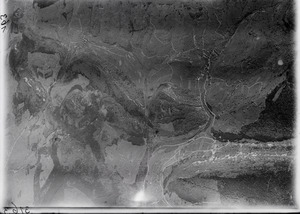Bärschwil facts for kids
Quick facts for kids
Bärschwil
|
||
|---|---|---|
|
||
| Country | Switzerland | |
| Canton | Solothurn | |
| District | Thierstein | |
| Area | ||
| • Total | 11.19 km2 (4.32 sq mi) | |
| Elevation | 466 m (1,529 ft) | |
| Population
(Dec 2020 )
|
||
| • Total | 803 | |
| • Density | 71.76/km2 (185.86/sq mi) | |
| Postal code |
4252
|
|
| Surrounded by | Corban (JU), Courchapoix (JU), Courroux (JU), Grindel, Laufen (BL), Liesberg (BL), Montsevelier (JU), Vicques (JU) | |
Bärschwil is a small village and municipality in Switzerland. It's located in the Thierstein district, which is part of the canton of Solothurn. It's a quiet place, nestled in a side valley near the Birs river.
Contents
A Look Back in Time: Bärschwil's History
Bärschwil was first mentioned in old records way back in 1194. For many years, from the 1800s until 1957, Bärschwil was known for its gypsum mines. Gypsum is a soft mineral used to make things like plaster and drywall.
At first, people dug for gypsum right on the surface. Later, they dug underground mines, reaching the gypsum through tunnels called adits. The first mine was at a place called Gupf until 1910. After that, a new mine opened at Kirchacker.
In 1875, a Jura railway line was built near Bärschwil, and a train station opened. This made it easier to transport things. From 1894 to 1952, the gypsum mines even had their own special narrow-gauge railway. It used horses and gravity to move the gypsum to the station!
Exploring Bärschwil's Geography
Bärschwil covers an area of about 11.22 square kilometers (about 4.3 square miles). A big part of this land, almost half (41.4%), is used for farming. Even more land, about 52.9%, is covered by forests.
A smaller part of the land (5.0%) has buildings and roads. A tiny bit (0.2%) is rivers or lakes, and 0.3% is land that can't be used for farming or building.
The municipality includes the main village of Bärschwil. It also has two smaller settlements, or hamlets, called Wiler and Schmelzi.
Bärschwil's Coat of Arms
Every town has a special symbol called a coat of arms. Bärschwil's coat of arms has two parts. The top part is blue and shows a silver fish swimming. The bottom part is silver and shows a red crozier. A crozier is a hooked staff, like the one a bishop carries.
Who Lives in Bärschwil? (Demographics)
Bärschwil has a population of about 803 people. Over the last ten years, the population has stayed pretty stable.
Most people in Bärschwil speak German, which is about 95% of the population. A small number of people also speak French or English.
In Bärschwil, about 51% of the people were born there. Another 10% were born in the same canton (Solothurn). About 29% were born somewhere else in Switzerland, and 8% were born outside of Switzerland.
The age groups in Bärschwil include:
- Children (0-6 years old): about 5.7%
- Teenagers (7-19 years old): about 20.2%
- Young adults (20-24 years old): about 5.3%
- Adults (25-44 years old): about 27.1%
- Older adults (45-64 years old): about 26.5%
- Seniors (65 and older): about 15.2%
Most people in Bärschwil are married. There are also single people, widows, and divorced individuals. There are about 2.6 people living in each household on average.
Here's how the population of Bärschwil has changed over time:

How People Work in Bärschwil (Economy)
Bärschwil has a low unemployment rate, meaning most people who want to work can find jobs. The jobs in Bärschwil are divided into three main types:
- Primary Sector: This includes jobs that get raw materials from nature. In Bärschwil, this means farming.
- Secondary Sector: These jobs turn raw materials into finished products. This includes manufacturing (making things in factories) and construction (building things).
- Tertiary Sector: These jobs provide services to people. In Bärschwil, this includes things like shops, restaurants, transportation, and education.
Many people who live in Bärschwil travel to other towns for work. About 26% of workers use public transportation, and over half (56%) use a private car to get to their jobs.
Faith and Beliefs (Religion)
Most people in Bärschwil are Roman Catholic, making up about 74% of the population. Another group, about 9%, belongs to the Swiss Reformed Church. There are also smaller numbers of people who follow other Christian churches, Islam, Buddhism, or Hinduism. About 11% of the population does not belong to any church.
Learning and Schools (Education)
In Bärschwil, about 33% of the people have finished high school (upper secondary education). A smaller group, about 5.5%, has gone on to get a higher education from a university or a specialized college.
The school system in Solothurn canton works like this:
- Young children can go to two years of optional Kindergarten.
- Then, students go to six years of primary school.
- After primary school, there are three years of required lower secondary school. Students from Bärschwil go to a school in a nearby town for this.
- After that, there are optional advanced schools for three to five years.
Many students who live in Bärschwil go to schools outside the municipality. Also, some students from other towns come to school in Bärschwil.
See also
 In Spanish: Bärschwil para niños
In Spanish: Bärschwil para niños





